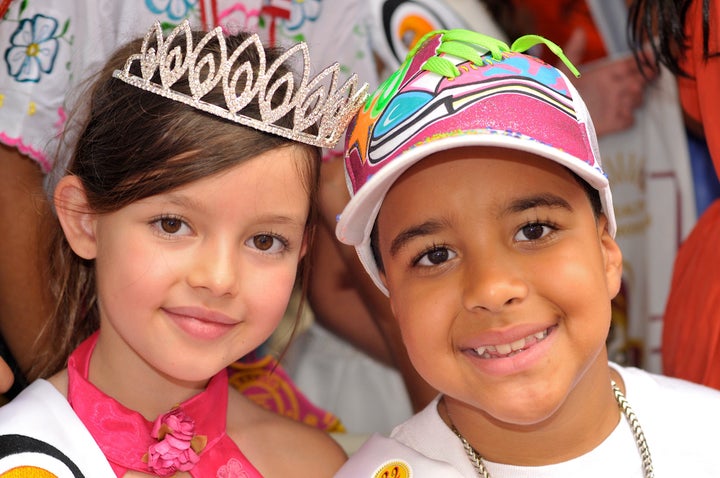
WASHINGTON -- A new analysis of 2010 Census data suggests that America might be become a white-minority nation faster than once predicted.
The data shows a declining number of white adults and growing under-18 populations of Hispanics, Asians and other minorities. Nationwide, 67 percent of adults are white, but just 54 percent of children are.
“Were it not for Hispanics, the nation’s child population would have declined,” the report's authors wrote. According to the analysis, Hispanics saw the largest absolute increase in children, at 4.8 million. The nation’s white population grew by only 1.2 percent, far lower than the national growth rate of 9.7 percent and well below the 43 percent growth rates for Hispanics and Asians.
“This is a decade where we are finding out that the growth of the Hispanic population is really necessary to keep the population vibrant,” said the study’s author, Brookings Institution demographer William Frey.
Hispanics now comprise 23 percent of children, up from just 12 percent in 1990, according to Frey's report. Whites make up 54 percent of those under 18, down from 70 percent two decades ago.
But the younger generation, although more diverse than ever before, is also more stratified. The report finds segregation levels for black and Hispanic children are higher than for their adult counterparts, despite a general reduction in segregation over the past decade.
The largest ethnic divide is in Arizona, where 63 percent of the adult population is white, compared to 42 percent of the children. The demographic imbalance may help explain why the state has been ground zero for anti-immigration policies.
Frey said much of the increase in Hispanic and Asian youth during the last decade came from births, however, not immigration. He based that on his own research and annual population surveys, as the decennial Census did not ask about country of origin.
As some 11 million Baby Boomers will retire over the next several decades, the analysis emphasizes the importance of "new minorities"--as opposed to blacks and American Indians--to society. “With a rapidly aging white population," the report reads, "the United States depends increasingly on these new minorities to infuse its youth population—and eventually its labor force—with needed demographic heft and vitality."
But the impending demographic shift comes with risks, Frey concluded.
“‘Racial generation gaps’ can emerge as a result of competing interests regarding community resources or views on issues like immigration,” he wrote. “Politically, an age-race divide could create even sharper divisions between candidates and parties that espouse more or less government support for measures benefiting the young, like education or affordable housing, and those benefiting the old, like Social Security or Medicare.”
Other key findings from the report include:
- Hispanics, Asians and other new minorities account for all of the growth in the nation’s child population. From 2000 to 2010, the population of white children fell by 4.3 million, while the number of Hispanic and Asian children grew by 5.5 million.
- In areas of the country gaining children, Hispanics accounted for most of that growth. Texas gained nearly a million children -- nearly half the nation’s under-18 growth. Hispanics also fueled the youth growth in the next biggest gaining states of Florida, Georgia, North Carolina and Arizona.
- In almost half of states and nearly one-third of large metropolitan areas, the number of children declined. Those areas uniformly had the fewest Hispanic residents.
- Ten states and 35 large metro areas now have minority white child populations, with Atlanta, Orlando and Phoenix transitioning to “majority minority” cities.